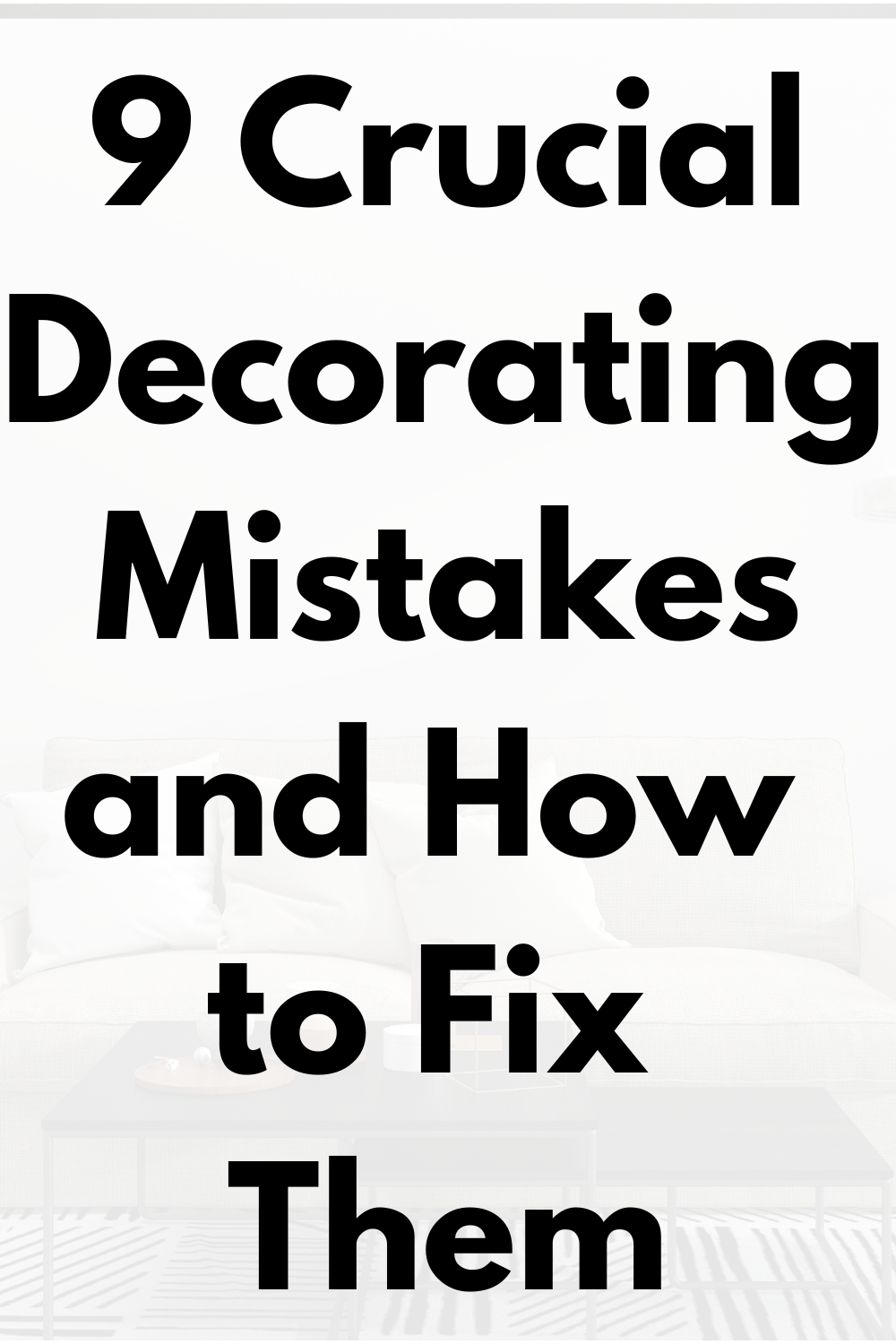Monthly and Weekend Events for Kids and Families:
Atlanta Boston Chicago Houston Los Angeles
New York City Philadelphia San Francisco Washington DC
HOME RECIPES DIY HOME KIDS CRAFTS
AMAZON DEALS WORK AT HOME JOB BOARD
9 Crucial Decorating Mistakes and How to Fix Them
Decorating your home can be fun and exciting, but also quite daunting. There are so many mistakes that can be made that can make your home look awkward, messy, and small. Of course, no one wants their home to look like that, so it’s important to know a few simple rules to avoid it. It’s a lot more simple than you think and when you know the do’s and don’t of home decorating, you’ll easily be able to make your home look beautiful and grand.
1. Don’t hang small pieces of art on large walls
One of the worst decorating mistakes is not using properly sized pieces of art on walls. If you have a small wall, then hang smaller pieces. If you have a large wall, hang bigger pieces. If you hang something small on a large wall, the space around the art will dwarf it. It will look disproportionate and out of place. Similarly, if you hang a really large piece on a small wall, it will overwhelm the wall and the space, and will actually make your room look smaller than it is.
2. Hanging curtains too low
Hanging curtains just above a window's trim, or halfway between the trim and the ceiling, used to be the norm. But that can make your room small and awkward. To make your room look taller, it’s important to hang the curtains as high as possible on the wall. You’ll also want to hang curtains as far and wide as possible. When the curtains are fully opened, they should barely even cover the first few inches of the window. This will make your room seem wider and larger as well.
3. Don’t use rugs that are too small for your space
Just like how you hang curtains plays a huge part in making your home look larger or smaller, the size of your area rugs do the same thing. You don’t want to use rugs that are too small for your space. The edges of your rugs should float under the furniture by a few inches, or should extend beyond the furniture by a few inches or feet. Anything smaller will play an optical illusion and will dwarf your room.
4. Making everything match
Going into a store and buying an entire set of something is the easy choice, but it can be the wrong option. There is no way for your decorating style to shine through with a total uniform home where everything looks the same. The way to add personality to your home is by giving the illusion that the pieces were collected over time and you can’t do that with matching sets.
5. Not adding color
Using color in home decorating is great. However, it can be overwhelming for some people. If you’re intimidated by color or simply want a neutral colored home, at least use some pops of color. This will create more interest for the eye instead of a boring plain room that’s all neutral in color.
6. Don’t make everything symmetrical
For more interest when decorating your home, try not to keep things too symmetrical. One side of your room doesn’t have to look the exact same as the other side. I know this is natural and tempting to do, but it’s also a little boring. Instead, try off centering furniture and art to keep things visually stimulating and interesting to the eye.
7. Not using different textures
To keep things interesting in your decor, you’ll want to use different textures in your decor. Soft, fluffy, woven, leather, sequins, heavy, light, etc. This creates interest for the eye instead of looking plain and boring.
8. Don’t clutter your decor
When it comes to accessorizing your home with pieces of decor, don’t let it look cluttered. Sometimes we focus too much on adding more decor so things don’t look boring and then it turns into clutter. There ends up being accessories everywhere you look in every single corner of your home. Remember to keep things simple and it will look more beautiful as well as make your home look larger than if it’s cluttered with decor.
9. The scale of your furniture and home decor is off
Scale is essentially how objects in a room relate to each other in terms of their size. When the scale of furniture and/or decor in a room is off, it makes the space feel off. Have you ever walked into a small family room with an oversized sectional in it? Or a large room that dwarfs a small loveseat and tiny coffee table? Those are examples of what not to do when it comes to scale.
Generally, a larger room can handle large furniture and decor. The smaller the room is, the smaller and delicate the furnishings and decor should be.
Also, make sure to pair furniture and accessories that are in proportion with each other. For example, a huge sectional sofa with tiny floor lamps will look odd paired together.
And don’t forget the height of your room. The higher your ceiling, the taller and more substantial your furniture can be, whereas low ceilings need furniture with a lower profile.
Leave a reply.
Your email address will not be published.
I found this amazing Early Black Friday Deal: 3 Months of Audible Premium Plus For Just $3.
Through Dec. 16, score an early Black Friday deal on a 3-month Audible Premium Plus membership for just $0.99 per month.
Prime members only / New Audible members only
Auto-renews at $14.95 a month after 3 months. Cancel anytime. Offer ends December 16, 2025.

